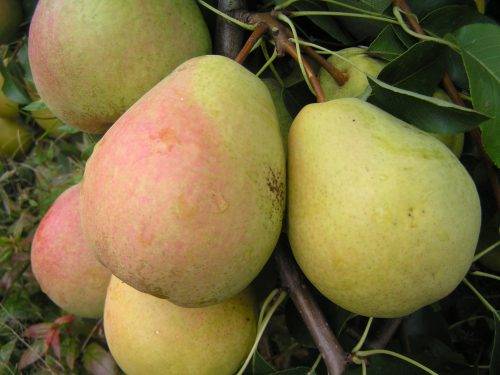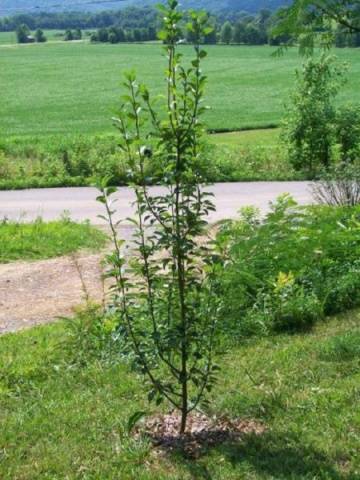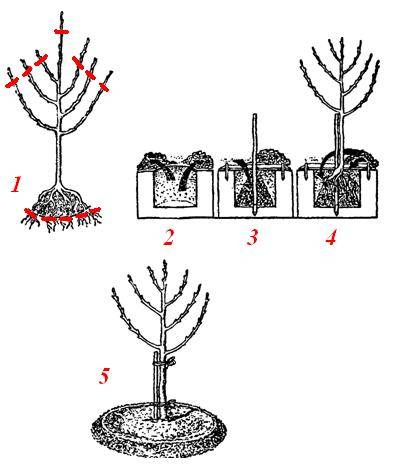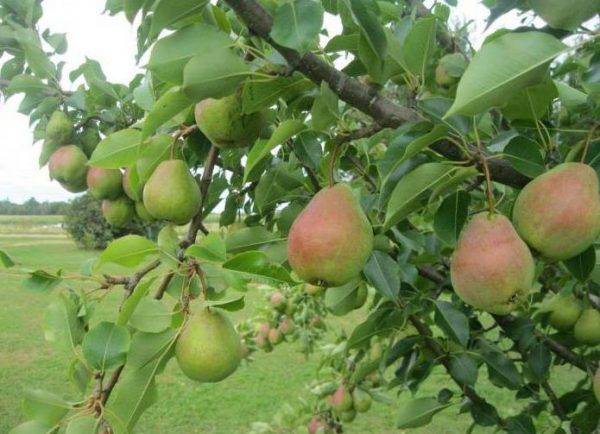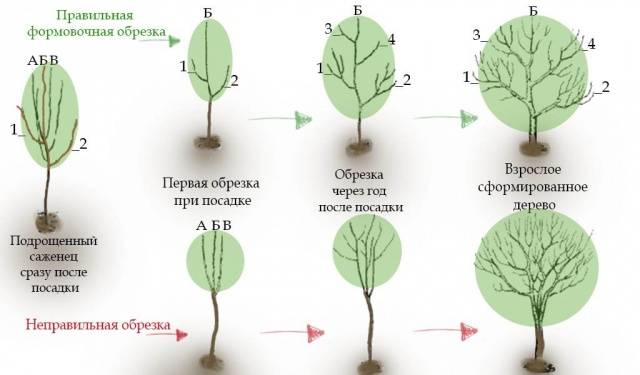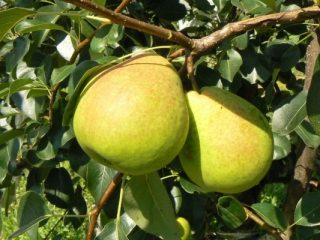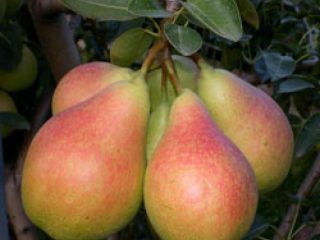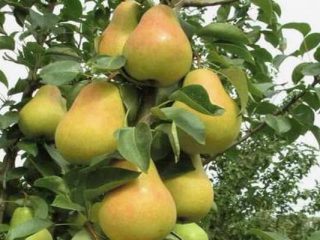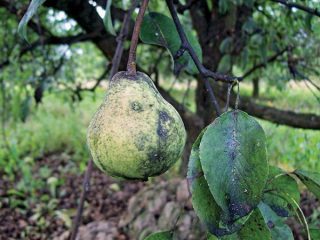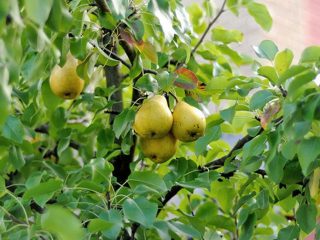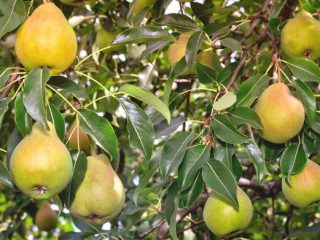Content
The main task of any gardener is to choose the right variety of fruit tree. Today we will talk about pears. Nurseries offer a wide variety of varieties. Making the right choice is difficult even for an experienced person. If you live in the middle zone, then you should pay attention to the winter hardiness of the tree. The Veles pear has these qualities, which will delight you with a large harvest in any weather conditions.
Characteristics of a winter-hardy variety
Let's start the description of the Veles pear with the fact that it is a late-ripening hybrid. It was bred by domestic breeders. In other sources you may find this variety called Daughter of the Excellent. This is the middle name of the pear. Velesa is recommended for cultivation in the Moscow region, as well as in regions where a moderately warm climate prevails.
The tree is considered to be of medium height, since the height of the Veles pear at the age of ten reaches 4 m. The young tree is characterized by a spreading crown. Over time, a lot of branches grow, they thicken, and the spherical shape of an adult pear is formed. The tree sends out many young shoots. The old branches that form the skeleton of the pear are thick, but they are strong and elastic.
The leaf shape is the usual oblong, like all pears. The color is rich dark green. The front side is predominantly glossy. The leaf is slightly curved, and there is a fine jagged edge along the edge.
The photo shows a Veles pear with fruits. Their shape is smooth, more rounded and not very elongated. The fruits grow in medium and large sizes, weighing 160–200 g. The smooth skin is slightly covered with a white coating, but there is no roughness on it. During harvesting, which happens at the end of August and lasts until mid-September, the color of the fruit is yellow-green. The pear acquires its best taste when a pink blush appears on its skin.
The pulp of the fruit is highly saturated with juice. The color is white with a cream tint. Maturity can be determined by the brown color of the seeds, which are located in standard seed chambers for pears. When eating the fruit, you feel the oiliness of the pulp. The juice is sweet with a slight acidic taste.
The big advantage of the Veles pear variety is the versatility of the fruit. They are suitable for all types of processing. Pears make delicious juice, jam, compote. The fruits can be eaten fresh and used for making desserts. Since the hybrid is late-ripening, the harvested crop can be stored in the basement until December. It is important that during storage the marketability and taste of the fruit do not change.
The hybrid is self-fertile. The Veles pear does not need pollinators for the ovary to form.If other varieties grow nearby, they will not become a hindrance, but will only increase the yield. Suitable pollinators are: Rogneda, Severyanka and Chizhovskaya.
Considering the description of the variety Veles pears photo reviews, it should be noted that the tree consistently produces a harvest every year. Resistance to diseases and fire blight is high. Velesa winters well, enduring severe frosts.
The video provides an overview of the variety:
Rules for planting seedlings
It is worth noting that planting and caring for a Veles pear is practically no different from the actions performed when growing other varieties. Seedlings are planted in winter and autumn.
In spring, seedlings begin to be planted from the twentieth of April until the second ten days of May. Autumn planting lasts from October to early November.
According to the description of the variety, Veles pear is a winter-hardy variety, but still the seedlings love a sunny place, protected from drafts and cold north winds. The tree is negatively affected by the proximity of groundwater. Constantly flooded seedlings can simply get wet. Velesa loves loose and nutritious soil.
For planting, it is better to buy seedlings that are two years old. They will take root faster. It is important to inspect the tree well. A healthy seedling should have a developed root system and no damage to the bark. You need to inspect the vaccination site especially carefully. It can be seen on the trunk of the seedling near the root as a protruding tubercle.
If it is decided to plant seedlings in the spring, then it is advisable to prepare the hole in the fall. If you forgot to do this, you can dig them up at least two weeks before planting.When digging a hole for a seedling, the fertile layer of soil is left aside. It will be needed for backfilling. Optimal pit dimensions: depth – 1 m, width – 80 cm.
When planting a seedling, adhere to the following rules:
- the root system and branches of the seedling are shortened with sharp pruning shears;
- when digging a hole, the fertile top layer of soil is separated from the infertile soil, but they are left to lie near the landing site;
- a wooden stake is driven into the center of the hole so that it protrudes above ground level to the middle of the seedling trunk;
- after planting the pear, but before watering, the tree is lightly tied to a peg with a rope;
- after watering, the earth will settle, the seedling will find its permanent place and can now be firmly tied to a peg until it takes root.
The procedure for performing the work described in the rules can be seen in the photo. Now let's look at what the process of planting a pear seedling looks like:
- So, a hole measuring 1x0.8 m is already ready. A peg is driven into its center. Its length, taking into account the depth of the hole and the height of a two-year-old pear seedling, is about 1.5 m.
- A nutrient mixture is made from fertile soil deposited near the pit. To do this, add humus or compost and mix thoroughly. You can do without adding mineral fertilizers, but if the soil is bad, then it is better to add about 200 g of superphosphate and the same amount of potassium fertilizer. The resulting mixture will feed the pear seedling with useful substances for two years.
- 3 buckets of the prepared fertile mixture are poured into the hole, but do not level it. A seedling is placed on the tubercle with its roots, after which they are evenly straightened.
- The pear is lightly tied with a rope to a peg, after which it is covered with the remnants of the prepared fertile mixture.
- 2-3 buckets of water are poured into the hole. When all the liquid is absorbed, the soil will subside along with the seedling. The hole can be filled up to ground level with nearby infertile soil. It can be lightly stamped with your foot around the trunk of the pear. Now the seedling has found its permanent place and can be tied tightly to a peg. In this state it will not yet take root. Then the rope is untied and the peg is broken off. Its remains in the ground will simply rot and become additional fertilizer for the pear seedling.
There is another option for planting a seedling. Its principle is based on immersing the pear roots in the mud. To do this, after filling three buckets of the fertile mixture, pour in two buckets of water. The roots of the seedling are immersed in the resulting slurry, tied to a peg, and the hole is backfilled.
The video shows the correct planting of a pear seedling:
Pear care
Caring for the Veles hybrid consists of similar procedures that are used for other varieties of pears.
Watering intensity
After planting, the seedling is watered at least three times a month for the first 2–3 years. The best time is early morning or late evening, when the sun is not burning the earth. An adult tree is filled with water up to 5 times per season. In dry weather, the intensity of watering is increased. Velesa takes water best when it is poured into the furrows. They are dug around the trunk of the pear. Each furrow is temporary and is intended for only one watering. After the water is absorbed, it is buried. For the next watering, dig another furrow in a new place.
Pruning branches
Velesa, like any other pear, can naturally form a crown. However, this matter cannot be left to chance, since then good yields cannot be expected. To form a crown, you need to trim off excess branches. Typically, the Veles pear variety has a sparse-tiered pattern. As a result, a mature tree develops three tiers of thick branches that form the skeleton. Moreover, each tier consists of five branches.
When pruning, stumps should not be left behind. The branch is cut right down to the trunk, and the wound is covered with garden putty or covered with waxed paper.
Reviews
There are only positive reviews from gardeners about the Veles pear. Let's take a look at them now.
